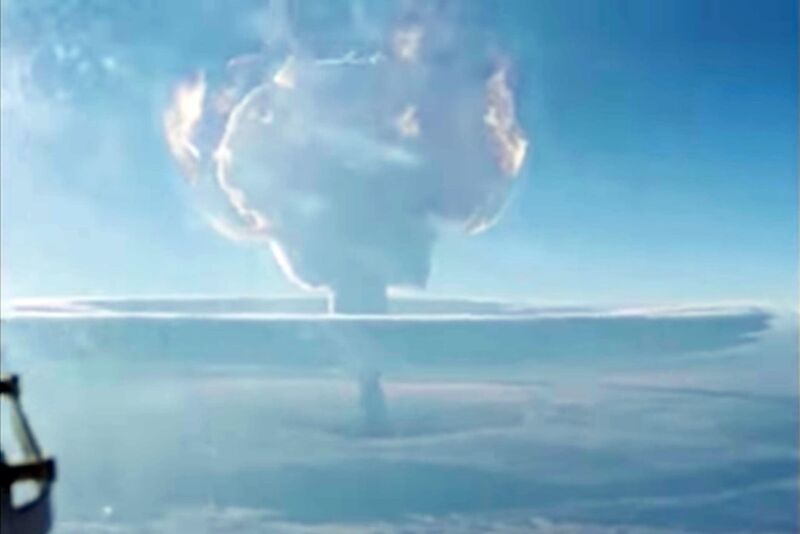
The detonation of the first nuclear bombs over Hiroshima and Nagasaki in August 1945 is seared into our collective memory, and the world has been haunted by the prospect of a devastating nuclear apocalypse ever since. Less well-known but equally significant from a nuclear arms race standpoint was the Soviet Union's successful detonation of a hydrogen "superbomb" in the wee hours of October 30, 1961.
Dubbed "Tsar Bomba" (loosely translated, "Emperor of Bombs"), it was the size of a small school bus—it wouldn't even fit inside a bomber and had to be slung below the belly of the plane. The 60,000-pound (27 metric tons) test bomb's explosive yield was 50 million tons (50 megatons) of TNT, although the design had a maximum explosive yield of 100 million tons (100 megatons).
The US had conducted the first successful test of a hydrogen bomb (codename: Ivy Mike) in 1954 and had been pondering the development of even more powerful hydrogen superbombs. But the Soviets' successful test lent greater urgency to the matter. Ultimately, President John F. Kennedy opted for diplomacy, signing the Partial Nuclear Test Ban Treaty on October 7, 1963.
But US nuclear policy—and, hence, world history—might have ended up looking very different, according to Alex Wellerstein, a historian of science at the Stevens Institute of Technology in New Jersey and author of Restricted Data: The History of Nuclear Secrecy in the United States, released earlier this year. He also maintains the NUKEMAP, an interactive tool that enables users to model the impact of various types of nuclear weapons on the geographical location of their choice.
Wellerstein has analyzed recently declassified documents pertaining to the US response to Tsar Bomba during the Kennedy administration. He described his conclusions in a fascinating article recently published in the Bulletin of the Atomic Scientists, coinciding with the 60th anniversary of the test.
Wellerstein gives a particularly vivid description of the Tsar Bomba detonation in his introduction:
At 11:32 a.m., the bombardier released the weapon. As the bomb fell, an enormous parachute unfurled to slow its descent, giving the pilot time to retreat to a safe distance. A minute or so later, the bomb detonated. A cameraman watching from the island recalled:
A fire-red ball of enormous size rose and grew. It grew larger and larger, and when it reached enormous size, it went up. Behind it, like a funnel, the whole earth seemed to be drawn in. The sight was fantastic, unreal, and the fireball looked like some other planet. It was an unearthly spectacle!
The flash alone lasted more than a minute. The fireball expanded to nearly six miles in diameter—large enough to include the entire urban core of Washington or San Francisco, or all of midtown and downtown Manhattan. Over several minutes it rose and mushroomed into a massive cloud. Within ten minutes, it had reached a height of 42 miles and a diameter of some 60 miles. One civilian witness remarked that it was "as if the Earth was killed."
reader comments
267